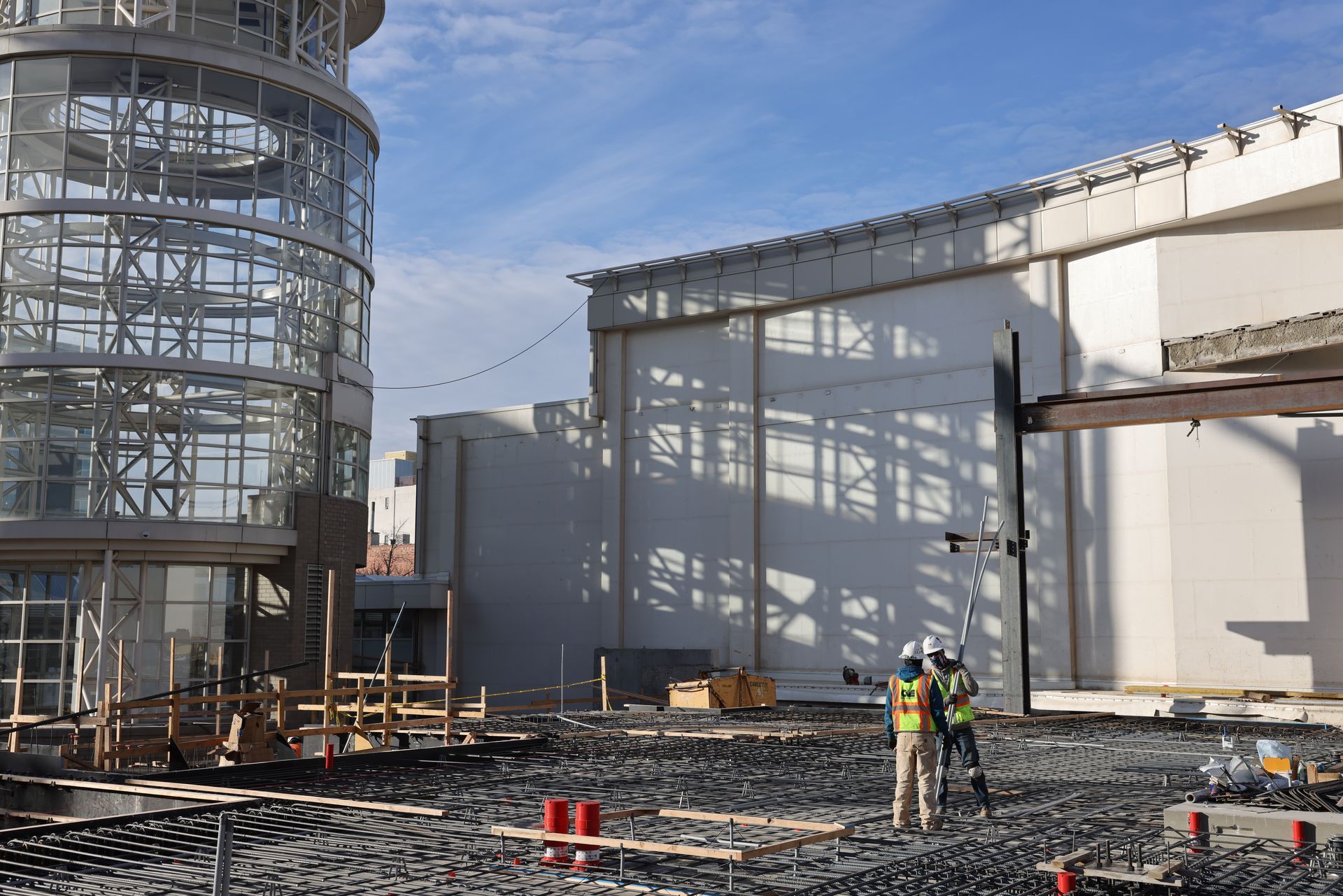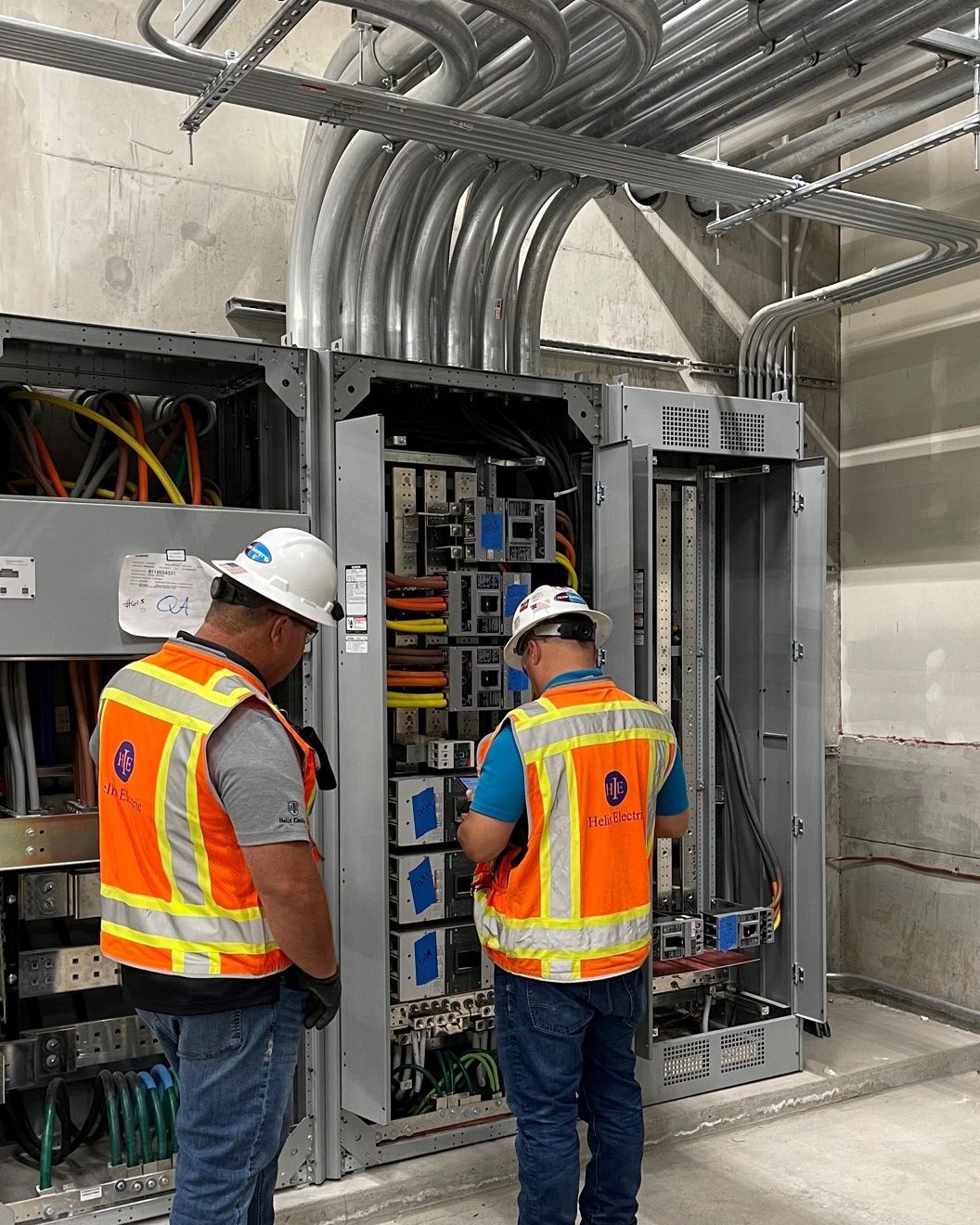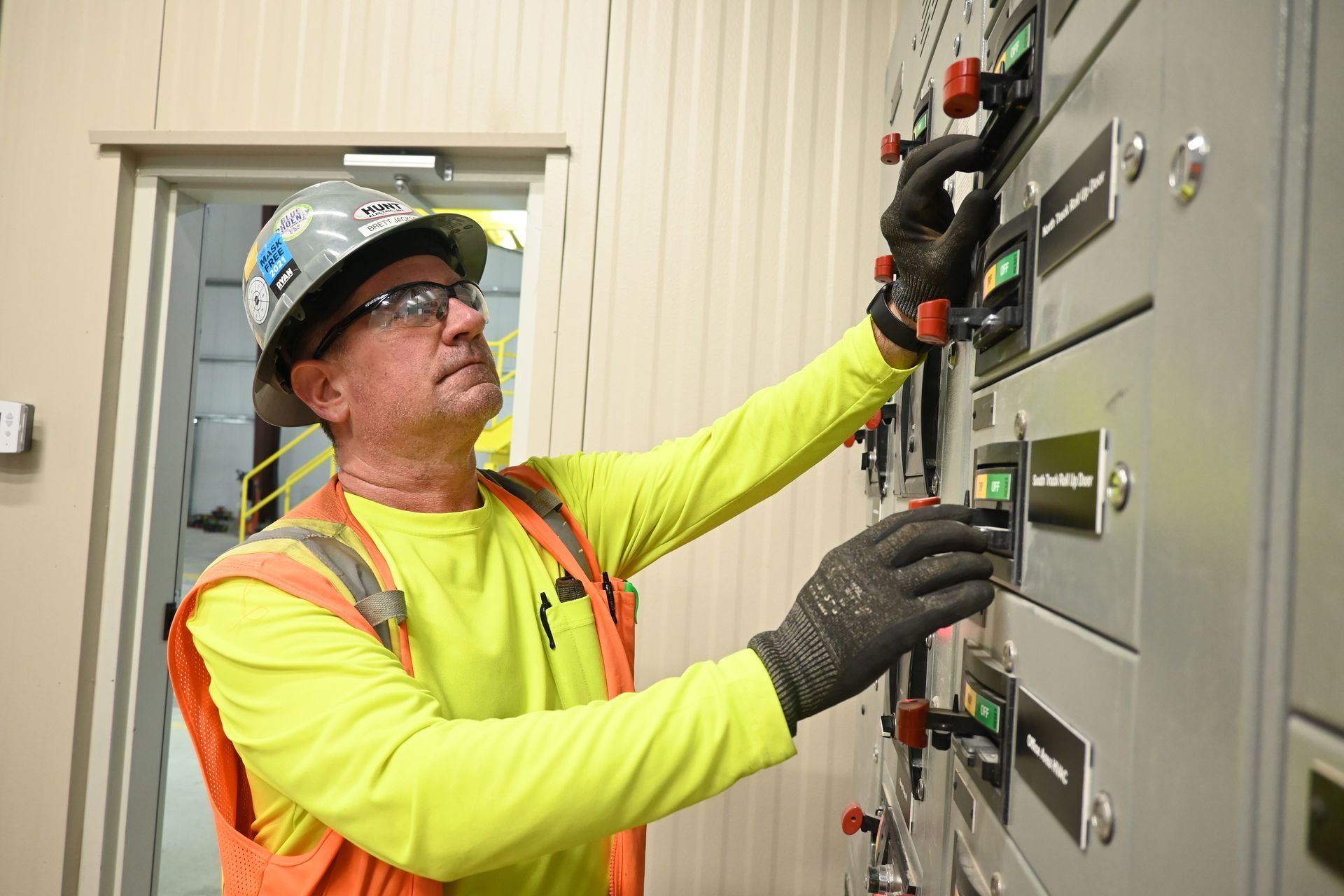Electrical contractors report a competitive market for not just people and innovation, but for the energy to power Utah’s future. By Taylor Larsen
Prefabrication Provides an Answer
All of those interviewed said prefabrication is critical to push necessary labor in a different way to reduce install times and on-site labor needs—and win market share in such a competitive field.
For Nate Wickizer, President of Cache Valley Electric, schedules are tighter than ever, making safety an even more critical component of electrical contracting, one where prefabrication provides the answer.
“VDC and prefabrication are necessary to be successful in this type of environment,” Wickizer said. "Incorporating them into our projects isn’t just a value-add proposition anymore—they’re absolutely integral to the process.”
Goodrich agreed, saying the goal is to increase the safety component of the work by getting the hours off the job site.
"We don’t want our electricians assembling light boxes and working out complicated conduit bends while navigating the hustle and bustle of an active job site,” he said. Instead, “the Foreman can plan, draw the layout, and analyze it with BIM for clash detection with the requisite boxes, sizes, and number of wires.”
The result? Teams who utilize prefabrication put in additional planning work to save on installation time and costs because the prefabrication warehouse delivers the requisite parts to the job site, ready to be installed. These efforts save their team members from the uncertainties of an active job site and give apprentices the experience they need under a more watchful eye, quick to guide them to best practices and journeyman status.
“It’s a win, win, win,” said Goodrich. All these victories in safety, schedule, logistics, and job site cleanup have been a boon to their relationships with general contractors and the project team.
For Hoffman and the Ludvik Electric team, the controlled environment and repetitive tasks have allowed sizeable specialization gains to boost project efficiency. One critical component, he said, was that mistakes can be made, and crucially, fixed in prefabrication before being successfully installed on site. Clients love it, said Hoffman, as prefabrication can minimize downtime for their operations.
However, even prefabrication is trending in a new direction, approaching an even more modular approach. Gregory said that, as contractors and owners become more knowledgeable, trade partners will look to “kit” whole rooms together, taking a page out of manufacturing’s playbook to assemble whole rooms
“Contractors that stay with the complexity, collaboration, and coordination will divide into those who can embrace it and those who don’t,” said Gregory.
Goodrich echoed the sentiment: “People think of it as a cost, but it’s an investment up front.”
Competition for Power
One concern looms large for electrical contractors—future energy availability, something Gregory as noted coming from utility providers holding off on creating new energy generation sources due to government regulation.
Gregory said that, with the construction boom—new data centers, expansion at The New SLC International Airport, a seemingly endless influx of new residents, and the manufacturing sector— every owner and project seeks to take advantage of location and power availability.
Troy Hendrick, Hunt Electric Division Manager, said, “As all this building continues, the utility has the potential to become like water in the Beehive State—scarce.”
“Data centers, essential for storing and processing the ever-growing amount of digital information, are consuming unprecedented amounts of energy, further straining an already fragile power grid,” said Mark Porter, Hunt Electric’s St. George Branch President
The online Data Center Map shows 28 active data centers in Utah. Data center research, advisory, and procurement platform Bextel showing five more data centers in the construction phase. All of it totals millions of square feet and around a full gigawatt of power by some estimates—about the equivalent power consumption of Utah County.
Wickizer noted the concern from owners is changing which projects move forward.
“In a nutshell, they need more power and they’re willing to look at all sorts of options for it. The size and scope of recent projects put a real strain on available power,” he said. “When it runs short, we’re seeing projects postponed or even canceled. These constraints lead some customers to explore alternative sources of power to fill the gap.”
Renewables, Alternative Power Grow in Importance
One solution is a greater emphasis on renewable energy, storage capabilities, and fully electrified buildings, something Hendrickson noted as a triumvirate of sorts, with sustainability and resiliency initiatives driving a greater emphasis on fully electrical building frameworks.
“The expansion of renewable energy collection and improvements to battery packs for collection and storage promise to upend the state of our power supply,” said Porter. “Soon, our utility will significantly switch from traditional energy sources to renewable ones. Technology is poised to remain a key driver in the evolution of construction, shaping how we build and manage facilities to meet future demands.”
“These advancements in our state,” Gregory cautioned, “will pressure the government to invest in our electrical infrastructure to ensure it’s ready for Utah’s future.”
At the ULI Trends Conference, nuclear power was even touted as a way to keep new facilities running at high capacity with little to no downtime. The option is growing more palatable so many decades removed from nuclear scares and disasters, especially with much safer controls and storage mechanisms.
Regardless of where power comes from, it will be incumbent on the industry to stay up to date on design trends, working hand in hand with other stakeholders to stay on the cutting edge of emerging technologies to build and maintain these new facilities.
Embracing the People Business
Whether contractually or interpersonally, those interviewed agreed that projects need a new level of collaboration to usher in a new era of design and construction.
“Traditional building method tends to go two steps forward and one step back,” said Goodrich. The delivery method can be a big win from the jump, with design-build avoiding “lots of pitfalls.”
“We’re liable for what we said,” he said. But it’s a feature, not a bug. “We find that we often have reduced the build costs because of the collaboration.”
Plus, he said owners and project teams can rest easy with fewer change orders.
“If you can get in with a GC, architect, and owner to participate with the major trades to buy in,” Goodrich explained, “the method is so much faster and cleaner. Precon and even operations are so much smoother.”
Hoffman emphasized anything to recognize and honor electrical contracting as a people business is a trend that needed to grow. Anything to build collaboration among the project team is a win—fishing trips, follow-up meetings, lunches together, face time with other members of a project team, whatever it takes to recognize the work done on a human scale.
“It’s tough because you’re still dealing with the human element,” he said. Tough but not impossible. Much like other sectors, giving workers all of the necessary tools shows a level of appreciation for their expertise that goes beyond the work—it’s a sign of respect. There is a matrix of working hard, getting paid well, and getting the feedback to push them forward that the industry still needs to figure out.
“Sometimes it’s as simple as saying ‘great job, I like what you did here.’”
The future is bright, and the electrical contractors who adapt to these trends will determine how bright that future can be.

































